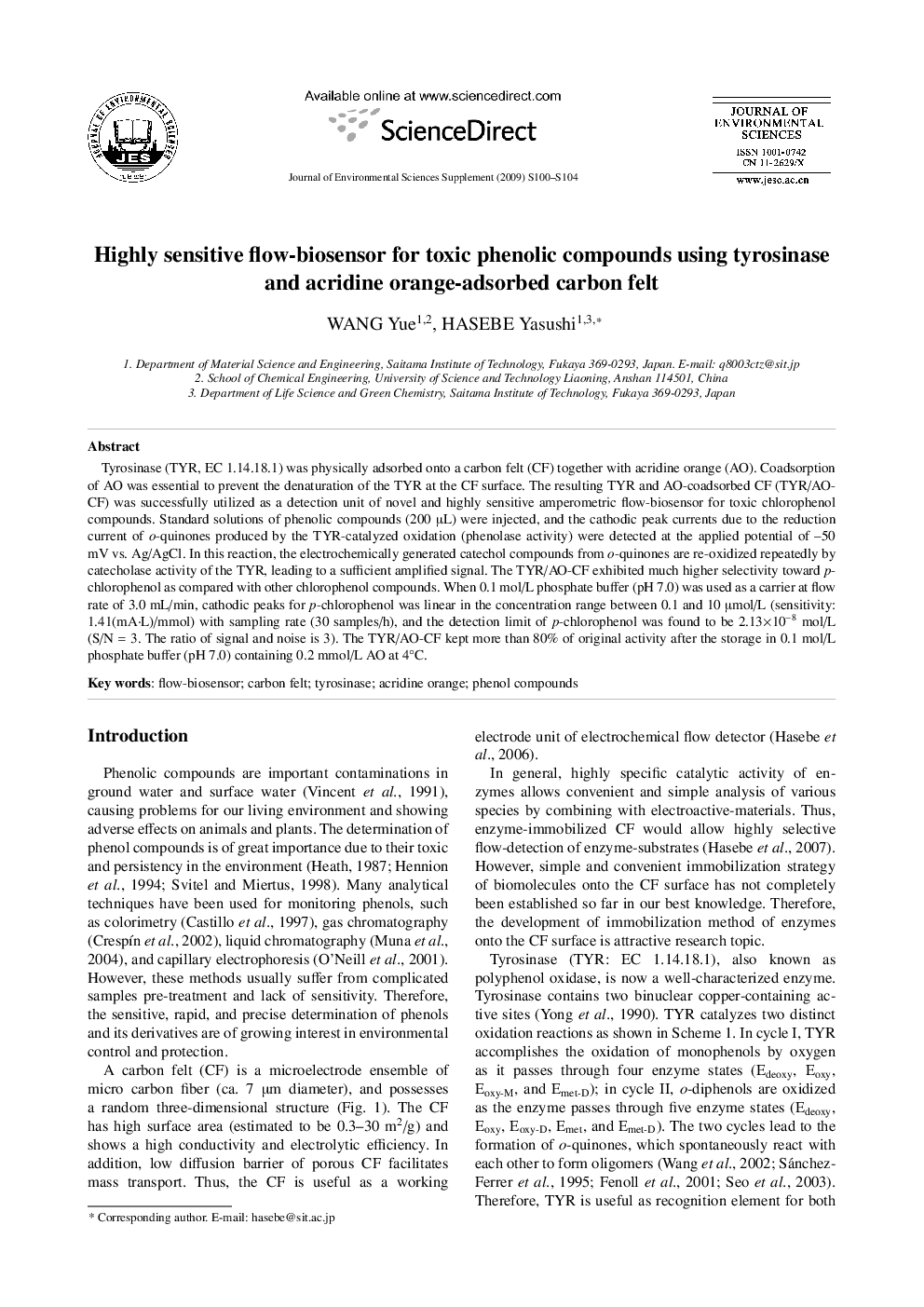| Article ID | Journal | Published Year | Pages | File Type |
|---|---|---|---|---|
| 4456442 | Journal of Environmental Sciences | 2009 | 5 Pages |
Tyrosinase (TYR, EC 1.14.18.1) was physically adsorbed onto a carbon felt (CF) together with acridine orange (AO). Coadsorption of AO was essential to prevent the denaturation of the TYR at the CF surface. The resulting TYR and AO-coadsorbed CF (TYR/AO-CF) was successfully utilized as a detection unit of novel and highly sensitive amperometric flow-biosensor for toxic chlorophenol compounds. Standard solutions of phenolic compounds (200 μL) were injected, and the cathodic peak currents due to the reduction current of o-quinones produced by the TYR-catalyzed oxidation (phenolase activity) were detected at the applied potential of −50 mV vs. Ag/AgCl. In this reaction, the electrochemically generated catechol compounds from o-quinones are re-oxidized repeatedly by catecholase activity of the TYR, leading to a sufficient amplified signal. The TYR/AO-CF exhibited much higher selectivity toward p-chlorophenol as compared with other chlorophenol compounds. When 0.1 mol/L phosphate buffer (pH 7.0) was used as a carrier at flow rate of 3.0 mL/min, cathodic peaks for p-chlorophenol was linear in the concentration range between 0.1 and 10 [xmol/L (sensitivity: 1.41(mA-L)/mmol) with sampling rate (30 samples/h), and the detection limit ofp-chlorophenol was found to be 2.13 − 108 mol/L (S/N = 3. The ratio of signal and noise is 3). The TYR/AO-CF kept more than 80% of original activity after the storage in 0.1 mol/L phosphate buffer (pH 7.0) containing 0.2 mmol/L AO at 4°C.
